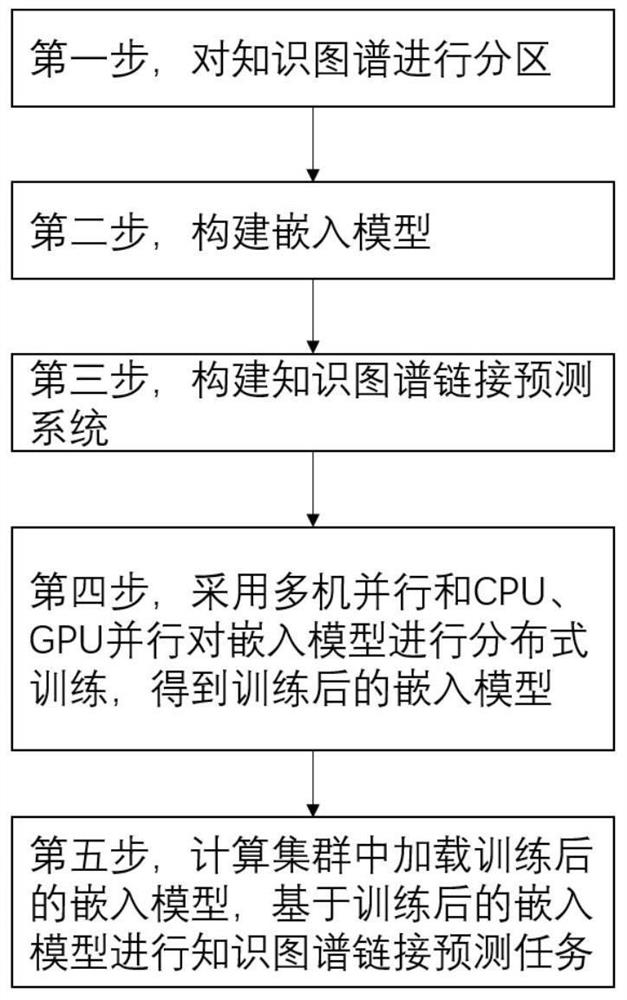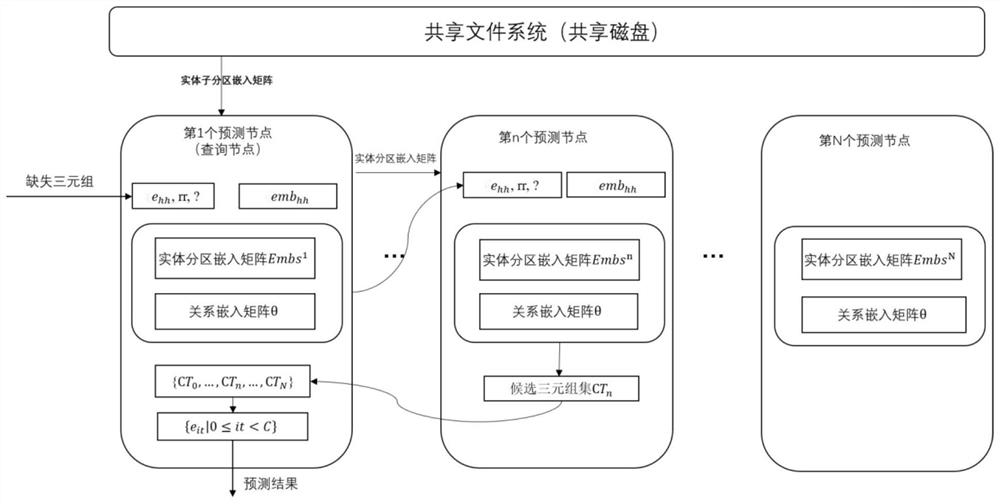A Link Prediction Method Based on Knowledge Graph Embedding
A technology of knowledge graph and prediction method, which is applied in the direction of multi-channel program device, program control design, instrument, etc., can solve the problems of large differences in data distribution, lack of knowledge graph link prediction application, performance degradation of embedded models, etc., to achieve Improve GPU utilization, shorten training time, and speed up the effect of link prediction
- Summary
- Abstract
- Description
- Claims
- Application Information
AI Technical Summary
Problems solved by technology
Method used
Image
Examples
Embodiment Construction
[0114] Such as figure 1 Shown, the present invention comprises the following steps:
[0115] The first step: partition the knowledge map; determine the number of partitions P and the number of sub-partitions PP of each partition according to the needs, and divide all entities into subP non-overlapping sub-partitions, subP=P×PP, sub-partitions are entities The non-overlapping subsets of the set E are partitioned into the union of PP sub-partitions; all triples are divided into different sub-triple blocks according to the sub-partitions where the head entity and tail entity are located; the method is:
[0116] 1.1 Input the knowledge map data, get the entity set E, the relationship set R, the triple set T, the number of entities num_entities, E contains num_entities entities, num_entities is a positive integer, T contains num_triples triples, num_triples is a positive integer . For example: input 8 entities, 2 relational knowledge graphs, then E={e 0 ,e 1 ,e 2 ,e 3 ,e 4 ,e...
PUM
 Login to View More
Login to View More Abstract
Description
Claims
Application Information
 Login to View More
Login to View More - R&D
- Intellectual Property
- Life Sciences
- Materials
- Tech Scout
- Unparalleled Data Quality
- Higher Quality Content
- 60% Fewer Hallucinations
Browse by: Latest US Patents, China's latest patents, Technical Efficacy Thesaurus, Application Domain, Technology Topic, Popular Technical Reports.
© 2025 PatSnap. All rights reserved.Legal|Privacy policy|Modern Slavery Act Transparency Statement|Sitemap|About US| Contact US: help@patsnap.com



